Enhancing Your Paintings Through the Use of Color Theory
Have you ever stared at a painting and felt an overwhelming rush of emotions? That magic often comes from the artist's understanding of color theory. This article dives deep into how color theory can transform your paintings, guiding you to make informed choices that enhance both the emotional and visual impact of your work. Imagine stepping into a world where every brushstroke feels intentional and every hue resonates with your audience. Sounds enticing, right? Let’s embark on this colorful journey together!
Understanding the fundamental concepts of color theory is essential for any artist. At its core, color theory revolves around the color wheel, which is a circular diagram that showcases the relationships between colors. The wheel is divided into three main categories: primary colors (red, blue, yellow), secondary colors (green, orange, purple), and tertiary colors (like red-orange or blue-green). These categories serve as the building blocks for all color combinations.
When you grasp the basics of the color wheel, you unlock the potential to create harmony in your artwork. Think of it like a musical scale; just as certain notes sound good together, some colors naturally complement each other, creating a visual symphony that captivates the viewer’s eye.
Color harmony involves the pleasing arrangement of colors in a painting. It’s about finding that sweet spot where colors work together to create a cohesive and balanced piece. Various color schemes can help achieve this, such as complementary, analogous, and triadic schemes. Each scheme has its unique flavor and can be utilized to evoke different feelings and atmospheres in your work.
For instance, complementary colors are those that sit opposite each other on the color wheel, like blue and orange. When used together, they create a stunning contrast that can make your artwork pop! On the other hand, analogous colors, which are next to each other on the wheel, offer a sense of serenity and cohesion. Understanding these relationships can elevate your compositions from ordinary to extraordinary.
Complementary colors are like the dynamic duos of the color world; they are opposite each other on the color wheel. Utilizing these colors effectively can create striking contrasts and vibrancy in your paintings, enhancing visual interest and depth. Imagine a sunset where the fiery orange of the sun meets the deep blue of the ocean—this contrast not only draws the eye but also creates a sense of drama.
Using complementary colors can help establish depth in your artwork. By strategically applying contrast, you can draw attention to focal points, making them stand out against the background. For example, if you have a vibrant red flower against a green backdrop, the flower will instantly become the star of the show. This technique is akin to spotlighting a performer on stage; it directs the audience’s attention precisely where you want it.
Different colors evoke different emotions, and complementary colors can significantly influence the emotional tone of a painting. For instance, a painting dominated by reds and greens can evoke feelings of passion and energy, while blue and orange can create a sense of calm yet invigorating atmosphere. By understanding the emotional impact of these color pairings, you can convey specific feelings through your artwork, allowing viewers to connect with your message on a deeper level.
Analogous colors, which are next to each other on the color wheel, provide a sense of harmony and tranquility. Think of a serene landscape painted in soft greens, blues, and yellows; it creates a peaceful and cohesive feeling that draws viewers in. When using analogous color schemes, you can create paintings that feel unified and balanced, much like a well-composed piece of music where every note flows seamlessly into the next.
Colors can evoke powerful emotions and associations. The psychology of color delves into how different colors affect our feelings and perceptions. For instance, warm colors like reds, oranges, and yellows are often associated with energy and warmth, while cool colors like blues and greens evoke calmness and tranquility. Understanding these psychological effects can help artists make intentional choices that resonate with viewers on a deeper level.
Warm colors tend to grab attention and evoke feelings of excitement, while cool colors often promote relaxation. By effectively using warm and cool colors, you can evoke specific moods in your artwork. Imagine a painting that transitions from warm, fiery colors on one side to cool, soothing colors on the other; it creates a dynamic tension that can captivate the viewer.
Different cultures attribute various meanings to colors. For example, in Western cultures, white often symbolizes purity, while in some Eastern cultures, it can represent mourning. Understanding color symbolism can enhance your storytelling in art, allowing you to connect with a broader audience. By being mindful of how colors are perceived across different cultures, you can create artwork that resonates universally, bridging gaps and fostering understanding.
- What is color theory? Color theory is a set of principles used to understand how colors interact and how they can be combined to create harmonious compositions.
- How do I choose a color scheme for my painting? Consider the emotions you want to evoke and choose a color scheme that aligns with that feeling, whether it's complementary, analogous, or another style.
- Can color theory help me sell my art? Absolutely! Understanding color theory can enhance the emotional impact of your work, making it more appealing to potential buyers.

The Basics of Color Theory
Understanding the fundamental concepts of color theory is essential for any artist who wants to elevate their craft. Color theory is like the artist's secret weapon, providing a roadmap to navigate the vibrant world of hues, shades, and tones. At its core, color theory revolves around the color wheel, a visual representation that organizes colors in a way that reveals their relationships and interactions. The primary colors—red, blue, and yellow—are the building blocks of all other colors. When you mix these primary colors, you create secondary colors: green (blue + yellow), orange (red + yellow), and purple (red + blue).
But wait, there’s more! Mix a primary color with a secondary color, and you get tertiary colors—these are the nuanced hues that add depth to your palette. Examples include red-orange and blue-green. Understanding these relationships not only helps you choose colors but also allows you to create a harmonious composition in your artwork. The color wheel is your best friend when it comes to visualizing how colors interact.
To further enhance your understanding, let's break down the color wheel into its essential components:
| Color Type | Examples |
|---|---|
| Primary Colors | Red, Blue, Yellow |
| Secondary Colors | Green, Orange, Purple |
| Tertiary Colors | Red-Orange, Yellow-Green, Blue-Purple |
Now, let’s talk about color relationships. Colors can be categorized based on their positions on the color wheel, which helps in creating a balanced visual experience. Here are some key relationships:
- Complementary Colors: Colors that are opposite each other on the wheel, such as red and green. They create a striking contrast.
- Analogous Colors: Colors that sit next to each other, like blue, blue-green, and green. They create harmony and a cohesive look.
- Triadic Colors: Colors that are evenly spaced around the wheel, like red, yellow, and blue. This scheme offers vibrant and dynamic compositions.
By mastering these basic principles of color theory, you empower yourself to make informed choices that can dramatically transform your paintings. Whether you're aiming for a calming atmosphere with analogous colors or a bold statement using complementary colors, understanding the basics of color theory is the first step toward creating art that resonates with viewers.
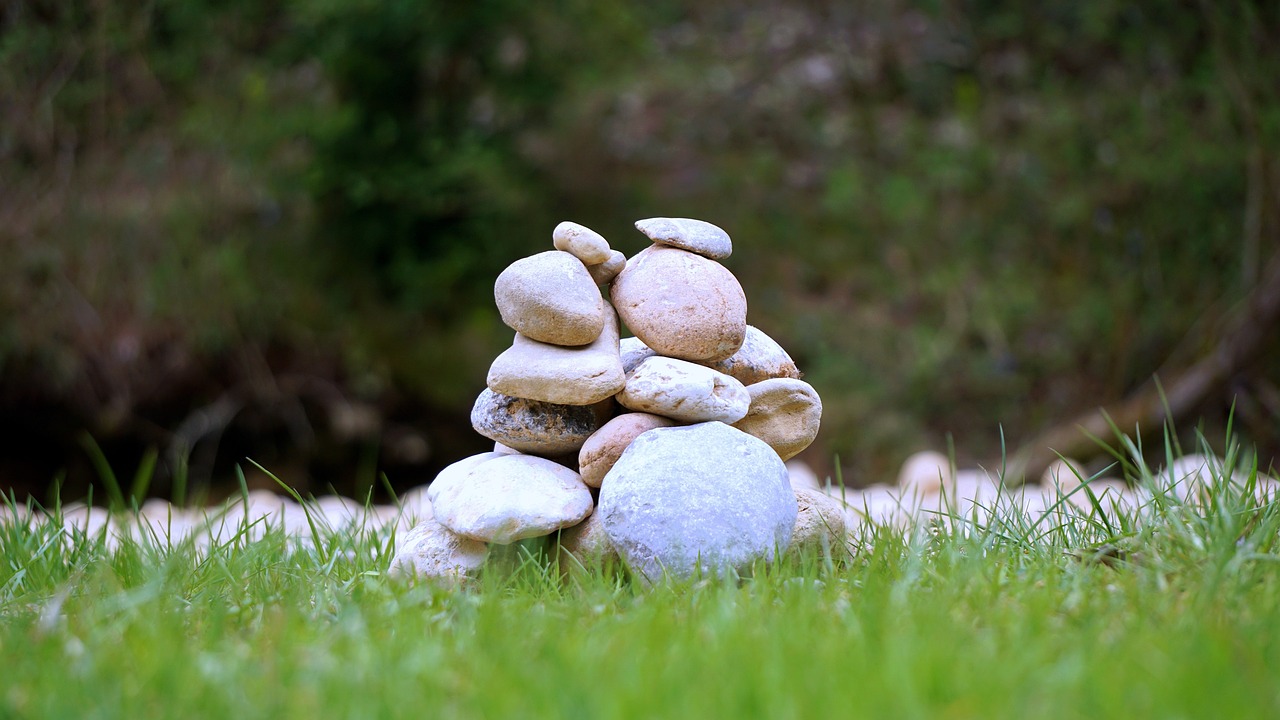
Color Harmony and Composition
When it comes to painting, the arrangement of colors is not just a matter of aesthetics; it’s a powerful tool that can dictate the mood and message of your artwork. Color harmony refers to the pleasing arrangement of colors that creates a sense of balance and unity within a painting. Think of it as the musical score of your artwork—just as a symphony needs the right notes in the right places to create a beautiful melody, your painting requires a thoughtful selection of colors to resonate with viewers. By understanding how different colors interact with each other, you can elevate your artistic expression and make your paintings truly captivating.
There are several color schemes that artists can utilize to achieve harmony and balance. These include:
- Complementary Colors: Colors that are opposite each other on the color wheel.
- Analogous Colors: Colors that are next to each other on the color wheel.
- Triadic Colors: Colors that are evenly spaced around the color wheel.
Each of these schemes offers a unique way to create visual interest and emotional impact. For instance, complementary colors can create a striking contrast that draws the eye, while analogous colors can provide a soothing effect, ideal for landscapes or serene scenes. The key is to experiment with these schemes to find what resonates with your artistic vision.
Moreover, the concept of color temperature plays a significant role in color harmony. Warm colors, such as reds and yellows, tend to advance in a composition, making them appear closer to the viewer. In contrast, cool colors like blues and greens recede, creating a sense of depth. By balancing these temperatures, you can guide the viewer's eye through your painting, establishing a natural flow that enhances the overall composition.
To illustrate the impact of color harmony, consider the following
| Color Scheme | Effect | Example |
|---|---|---|
| Complementary | High contrast, vibrant | Red and Green |
| Analogous | Calm, cohesive | Blue, Blue-Green, Green |
| Triadic | Dynamic, balanced | Red, Yellow, Blue |
In conclusion, mastering color harmony and composition is essential for any artist looking to enhance their paintings. By understanding the relationships between colors and how they can work together, you can create artworks that not only look stunning but also evoke the desired emotions in your audience. So, the next time you pick up your brush, remember that the colors you choose can make all the difference in the story you want to tell.
Here are some common questions regarding color harmony and composition:
- What are the best color combinations for beginners? Start with primary colors and explore complementary pairs like blue and orange or red and green.
- How can I create depth in my paintings? Use a mix of warm and cool colors to create contrast, which helps in establishing depth.
- Are there any tools to help with color selection? Yes, color wheels and digital color palette tools can assist in making informed choices.

Complementary Colors
When it comes to painting, are like the dynamic duo of the color wheel. These colors sit directly opposite each other, creating a striking contrast that can make your artwork pop with energy and vibrancy. Imagine a bright orange sitting boldly against a deep blue; the visual tension between them draws the eye and creates a sense of excitement. Using complementary colors can transform a mundane piece into something that resonates with viewers, capturing their attention and evoking emotion.
One of the most effective ways to utilize complementary colors is to create a sense of balance and harmony within your composition. When you place these colors side by side, they enhance each other’s intensity. For instance, a splash of red next to a touch of green doesn’t just look appealing; it creates a visual dialogue that can tell a story. You can think of it as a conversation between two friends—each one bringing out the best in the other. This relationship can be leveraged to highlight focal points in your painting, guiding the viewer's gaze exactly where you want it.
However, it’s not just about slapping complementary colors together and calling it a day. There are techniques to consider that can enhance the depth and emotional impact of your work. For example, using a dominant color and allowing its complementary counterpart to serve as an accent can create a striking visual hierarchy. This technique can be particularly effective in landscapes, portraits, or abstract compositions, where you want to draw attention to specific elements. Picture a serene blue sky with a bold orange sunset—each color enhances the other, creating a moment that feels both alive and serene.
Furthermore, the emotional resonance of complementary colors cannot be understated. Different colors evoke different feelings; for instance, blue can evoke calmness while orange might inspire enthusiasm. By thoughtfully pairing complementary colors, you can manipulate these emotional responses. Consider the following emotional associations:
| Color | Emotion |
|---|---|
| Red | Passion, Energy |
| Green | Growth, Tranquility |
| Blue | Calm, Trust |
| Orange | Joy, Creativity |
By understanding these associations, you can create paintings that not only look good but also resonate on a deeper emotional level with your audience. Imagine crafting a piece that not only showcases skill but also conveys a message or feeling—this is the power of complementary colors in action.
In conclusion, complementary colors are more than just a technique; they are a powerful tool in your artistic arsenal. By mastering their use, you can enhance the vibrancy, depth, and emotional impact of your paintings. So, the next time you pick up a brush, consider how you can incorporate these dynamic pairs to elevate your work. Your canvas awaits!
- What are complementary colors? Complementary colors are pairs of colors that are opposite each other on the color wheel, such as red and green or blue and orange.
- How do I use complementary colors effectively? To use complementary colors effectively, place them side by side to create contrast and visual interest. Consider using one as a dominant color and the other as an accent.
- What emotional effects do complementary colors have? Complementary colors can evoke strong emotional responses. For example, red can convey passion, while blue can evoke calmness. Using them together can enhance the emotional tone of your artwork.
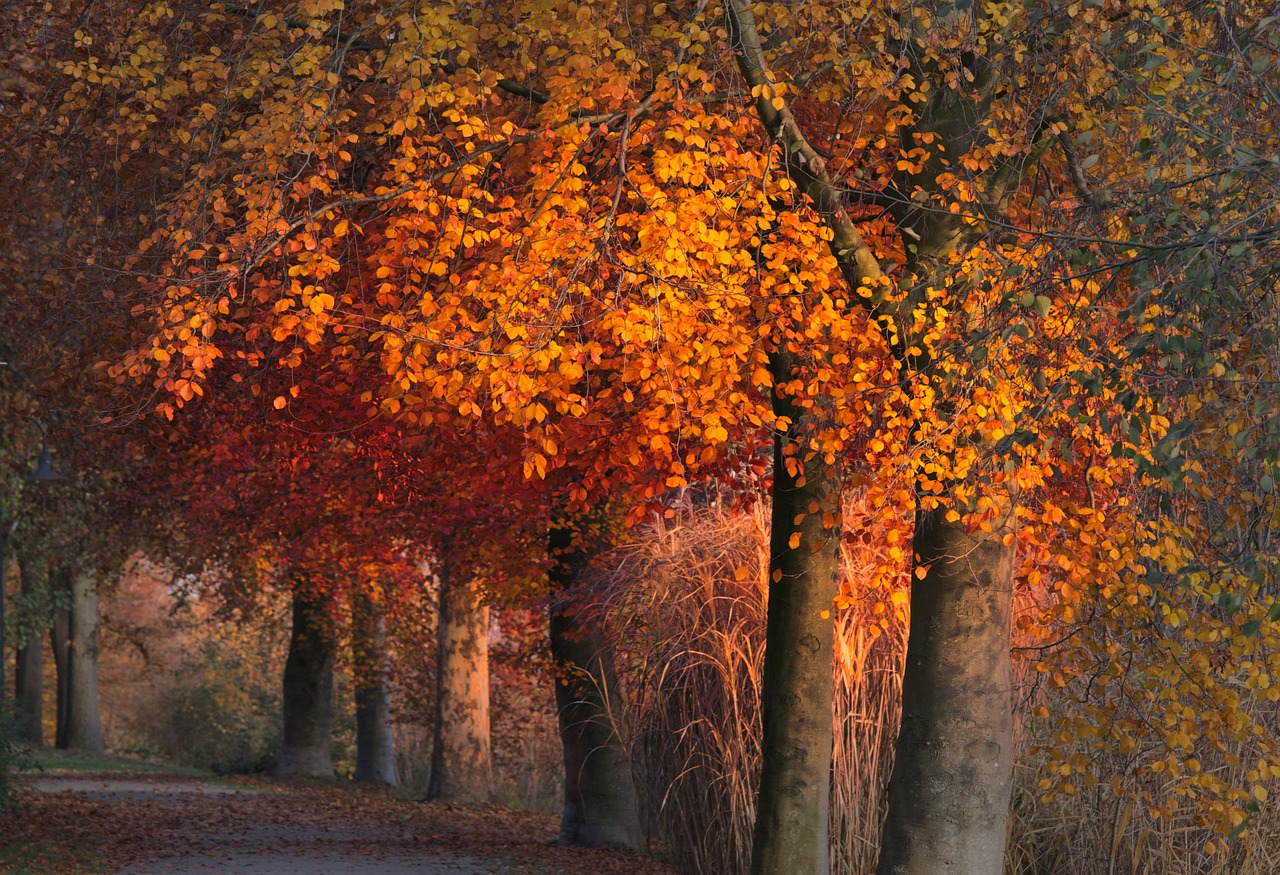
Creating Depth with Contrast
When it comes to painting, creating a sense of depth is crucial for capturing the viewer's attention and guiding their gaze throughout the artwork. One of the most effective ways to achieve this is through the use of contrast, particularly when employing complementary colors. Imagine standing on a mountain peak, where the vibrant colors of the valley below pop against the muted tones of the sky. This visual separation is what contrast can do for your paintings, allowing certain elements to stand out while others recede into the background.
To effectively use contrast in your artwork, consider these techniques:
- Layering Colors: By layering complementary colors, you can create a dynamic interplay that draws the eye. For instance, placing a bright orange next to a deep blue not only enhances the vibrancy of both colors but also adds a three-dimensional feel to the artwork.
- Focal Points: Use contrast to establish focal points in your painting. By placing a bold color against a more subdued background, you can guide the viewer's attention exactly where you want it. Think of it as spotlighting the main act in a theater—everything else fades into the shadows.
- Textural Contrast: Incorporating different textures can also enhance the sense of depth. A smooth, glossy finish next to a rough, matte surface can create a striking visual contrast that adds interest and complexity to your piece.
Moreover, understanding how to manipulate light and shadow can further amplify the effect of contrast in your paintings. For example, consider the way light interacts with surfaces; a bright highlight against a dark shadow can create a dramatic sense of volume. This technique is often employed in classical painting, where artists like Caravaggio mastered the art of chiaroscuro to bring their subjects to life.
Remember, the goal of using contrast is not just to make your painting visually appealing, but also to evoke emotion. The interplay between light and dark, bright and muted colors can convey feelings of excitement, tension, or tranquility. It’s about telling a story through your color choices and making your audience feel something deep within.
In conclusion, mastering the art of creating depth with contrast is an invaluable skill for any artist. By thoughtfully applying complementary colors, layering textures, and manipulating light, you can elevate your paintings to new heights, transforming them from mere images into powerful expressions of emotion and depth.
Q: How do I know which complementary colors to choose?
A: Refer to the color wheel! Complementary colors are located directly opposite each other. For example, red is opposite green, blue is opposite orange, and yellow is opposite purple.
Q: Can I use more than two complementary colors in a painting?
A: Absolutely! While the primary use of complementary colors involves pairs, you can incorporate multiple pairs to create a more complex and layered effect.
Q: What if I want a softer effect rather than a stark contrast?
A: You can achieve a softer contrast by mixing complementary colors with white or gray to create tints and shades. This will lessen the vibrancy while still maintaining depth.
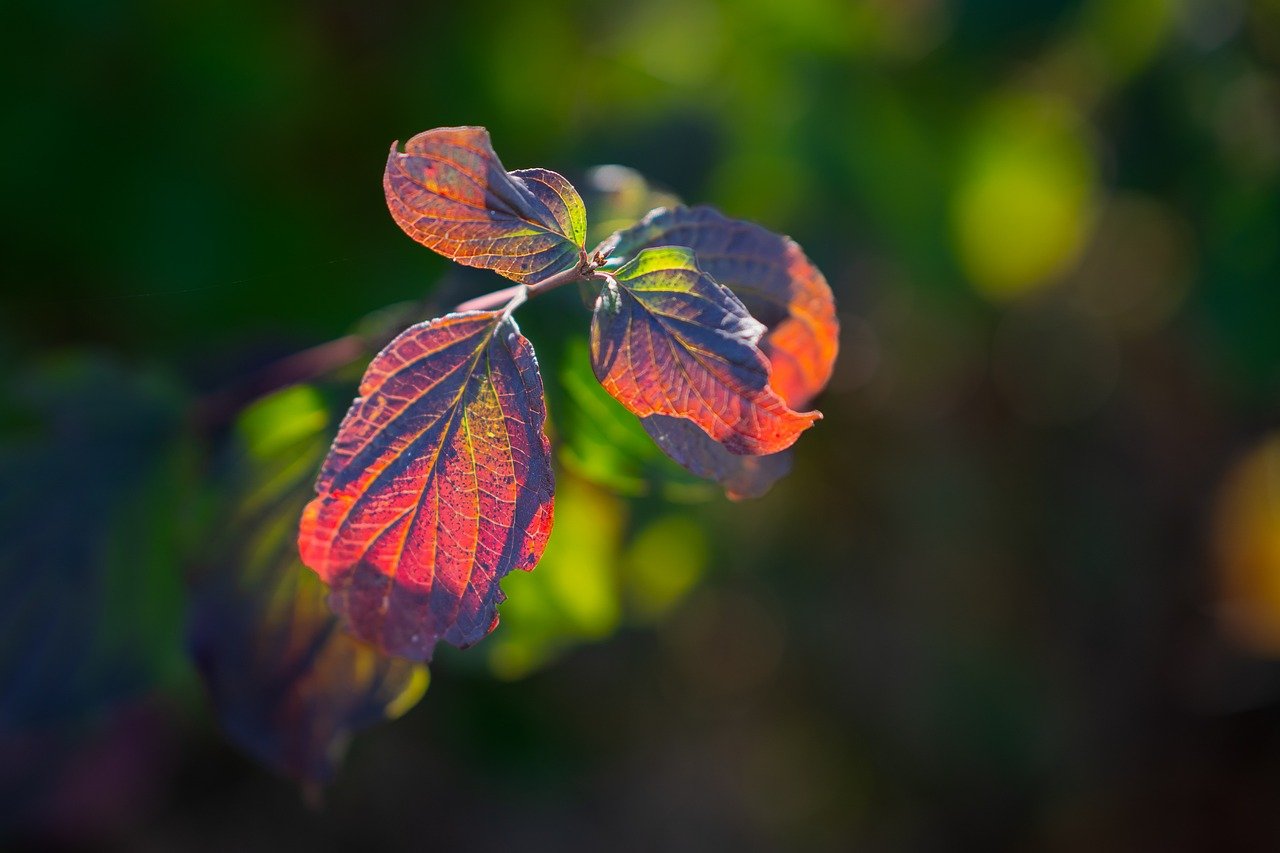
Emotional Impact of Complementary Colors
When it comes to painting, the colors you choose can make or break the emotional resonance of your artwork. Complementary colors—those that sit opposite each other on the color wheel—are especially powerful in this regard. They aren't just about visual appeal; they can evoke strong feelings and set the mood of your piece in a way that captivates the viewer. Imagine walking into a gallery and being immediately drawn to a painting that uses vibrant reds and cool greens. The contrast not only grabs your attention but also stirs a range of emotions that can be both exhilarating and unsettling.
To illustrate this, let's consider some common emotional associations with complementary colors:
| Color Pair | Emotional Impact |
|---|---|
| Red & Green | Passion vs. Calm |
| Blue & Orange | Trust vs. Energy |
| Purple & Yellow | Luxury vs. Happiness |
Using these color pairs strategically can help you tap into the emotions you want to convey. For instance, a painting dominated by red and green can evoke feelings of warmth and excitement, while simultaneously providing a sense of balance through the calming effect of green. This duality can create a dynamic tension that pulls the viewer in, inviting them to explore the layers of meaning behind the colors.
Moreover, the emotional impact of complementary colors can be heightened by the way they are applied. For example, if you use vibrant reds alongside softer greens, you can create a sense of urgency or drama, while still maintaining a soothing overall aesthetic. This contrast can lead to a powerful emotional experience for the viewer, making them feel as if they are part of the painting's narrative.
Incorporating complementary colors into your artwork is not just a technical choice; it's a way to communicate deeper feelings and narratives. Think about the last time a piece of art moved you. Chances are, the artist made careful choices about color to evoke those emotions. So, the next time you're in front of a blank canvas, consider how you can use complementary colors to not only enhance the visual impact of your work but also to stir the emotional depths of your audience.
- What are complementary colors? Complementary colors are pairs of colors that are located directly opposite each other on the color wheel, such as red and green or blue and orange. They create a strong contrast when used together.
- How do complementary colors affect emotions? Complementary colors can evoke contrasting emotions, such as excitement and calmness, depending on how they are used in a painting. Their juxtaposition can create tension and drama, drawing the viewer in.
- Can I use complementary colors in any painting style? Yes! Whether you're working in realism, abstract, or any other style, complementary colors can enhance your artwork's emotional depth and visual interest.
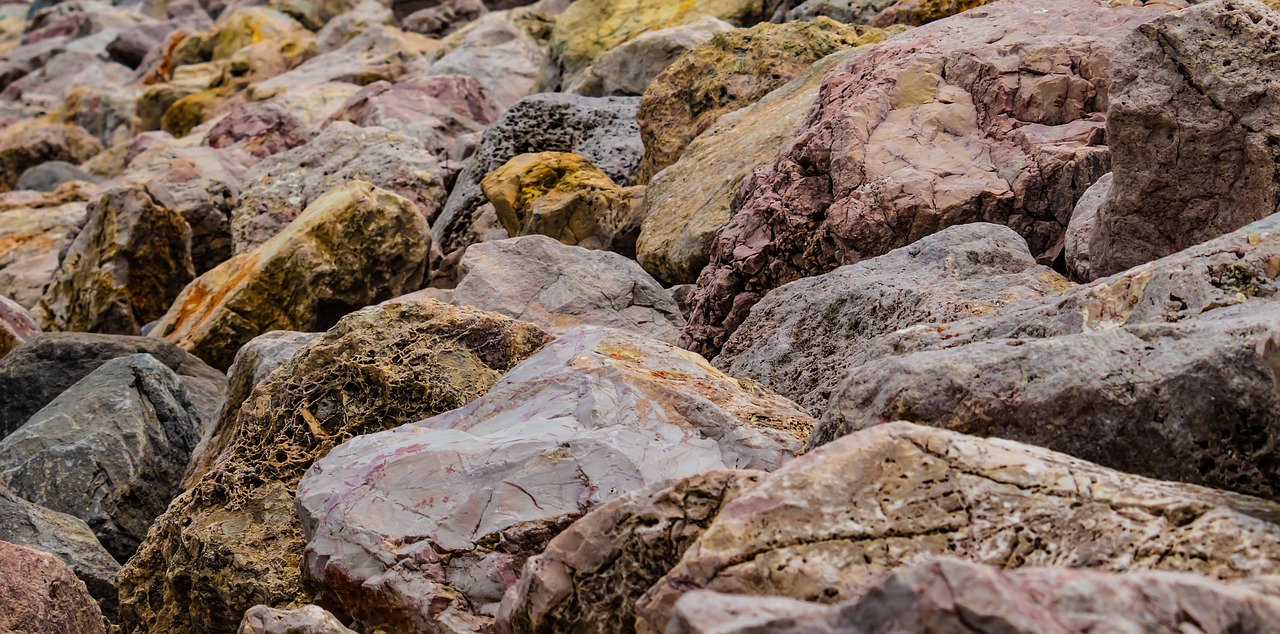
Analogous Colors
Analogous colors are a harmonious trio of hues that sit side by side on the color wheel. This relationship creates a sense of unity and cohesion, making them ideal for artists looking to evoke a serene and calming atmosphere in their paintings. Imagine a beautiful sunset where the warm oranges, soft yellows, and gentle reds blend seamlessly into one another—this is the magic of analogous colors. They work together to create a visual flow that guides the viewer's eye across the canvas, resulting in a pleasing experience.
When using analogous colors, it’s essential to choose one dominant color and allow the others to support it. For instance, if you decide to focus on a lush green, you might incorporate shades of blue-green and yellow-green to enhance the overall composition. This technique not only enriches the painting but also helps establish a mood. The result is often a composition that feels complete and well-thought-out, as the colors naturally complement each other.
One of the best ways to utilize analogous colors is to create a color palette that emphasizes the feelings you want to convey. For example, if you want to express tranquility, you might select a palette that includes soft blues, greens, and yellows. This combination can evoke feelings of peace and serenity, reminiscent of a quiet forest or a gentle stream. On the other hand, using brighter shades like yellows, oranges, and reds can generate a sense of warmth and joy, perfect for capturing the vibrancy of a summer day.
To help you visualize how to effectively use analogous colors, consider the following table that illustrates some common combinations:
| Dominant Color | Supporting Colors | Emotional Tone |
|---|---|---|
| Blue | Blue-Green, Blue-Purple | Calm, Trustworthy |
| Yellow | Yellow-Green, Yellow-Orange | Cheerful, Energetic |
| Red | Red-Orange, Red-Purple | Passionate, Intense |
Incorporating analogous colors into your artwork can significantly enhance its visual appeal. As you experiment with different combinations, pay attention to the emotions they evoke and how they interact with each other. The beauty of using analogous colors lies in their ability to create a harmonious balance that resonates with viewers, making your art not just a feast for the eyes but also an experience that stirs the soul.
- What are analogous colors? Analogous colors are groups of three colors that are next to each other on the color wheel, creating a harmonious effect when used together.
- How can I choose analogous colors for my painting? Start by selecting a dominant color and then pick the two colors that are adjacent to it on the color wheel to create a cohesive palette.
- What emotions do analogous colors evoke? The emotions can vary based on the specific colors chosen, but generally, they can create feelings of harmony, peace, and balance.

The Psychology of Color
Colors are not just visual elements; they are powerful communicators that can evoke a myriad of emotions and associations. For artists, understanding the psychological effects of color is crucial for creating art that resonates with viewers on a deeper level. Each color carries its own set of meanings and emotional responses, and this can dramatically influence how a piece of art is perceived. For instance, a painting dominated by shades of blue may evoke feelings of calmness and serenity, while vibrant reds and oranges can ignite passion and energy. This interplay between color and emotion is what makes color theory such an essential tool in the artist's toolkit.
When we delve into the psychology of color, it becomes evident that different colors can be categorized into two main groups: warm colors and cool colors. Warm colors, like reds, oranges, and yellows, are often associated with feelings of warmth, excitement, and energy. They can create a sense of urgency or stimulate the viewer, making them perfect for artworks intended to convey passion or action. On the other hand, cool colors such as blues, greens, and purples tend to evoke feelings of calmness, tranquility, and relaxation. They can create a soothing atmosphere, making them ideal for serene and reflective pieces.
To illustrate this further, consider the following table that summarizes the emotional associations of various colors:
| Color | Emotional Associations |
|---|---|
| Red | Passion, energy, love |
| Orange | Creativity, enthusiasm, warmth |
| Yellow | Happiness, optimism, clarity |
| Green | Growth, harmony, freshness |
| Blue | Calmness, trust, stability |
| Purple | Luxury, wisdom, spirituality |
Moreover, it's fascinating to note that color symbolism can vary significantly across different cultures. For example, while white is often associated with purity and peace in many Western cultures, it may symbolize mourning in some Eastern cultures. This cultural context can deepen the storytelling aspect of your artwork, allowing you to connect with a wider audience. By understanding these nuances, artists can make more intentional choices about their color palettes, ensuring that their work resonates not just visually, but also emotionally and culturally.
In conclusion, the psychology of color plays a pivotal role in art. By harnessing the emotional power of colors, artists can create works that not only capture attention but also evoke specific feelings and responses. Whether you aim to inspire joy, provoke thought, or instill calmness, the colors you choose will significantly impact how your message is received. So, the next time you pick up your brush, remember that you’re not just applying paint; you’re weaving a tapestry of emotions that can speak volumes to your audience.
- What is color theory? Color theory is a framework that explains how colors interact with one another and how they can be combined to create harmonious compositions.
- How do warm and cool colors affect emotions? Warm colors tend to evoke feelings of warmth and excitement, while cool colors promote calmness and tranquility.
- Can the meaning of colors change based on culture? Yes, the symbolism of colors can vary significantly across different cultures, influencing how art is perceived.
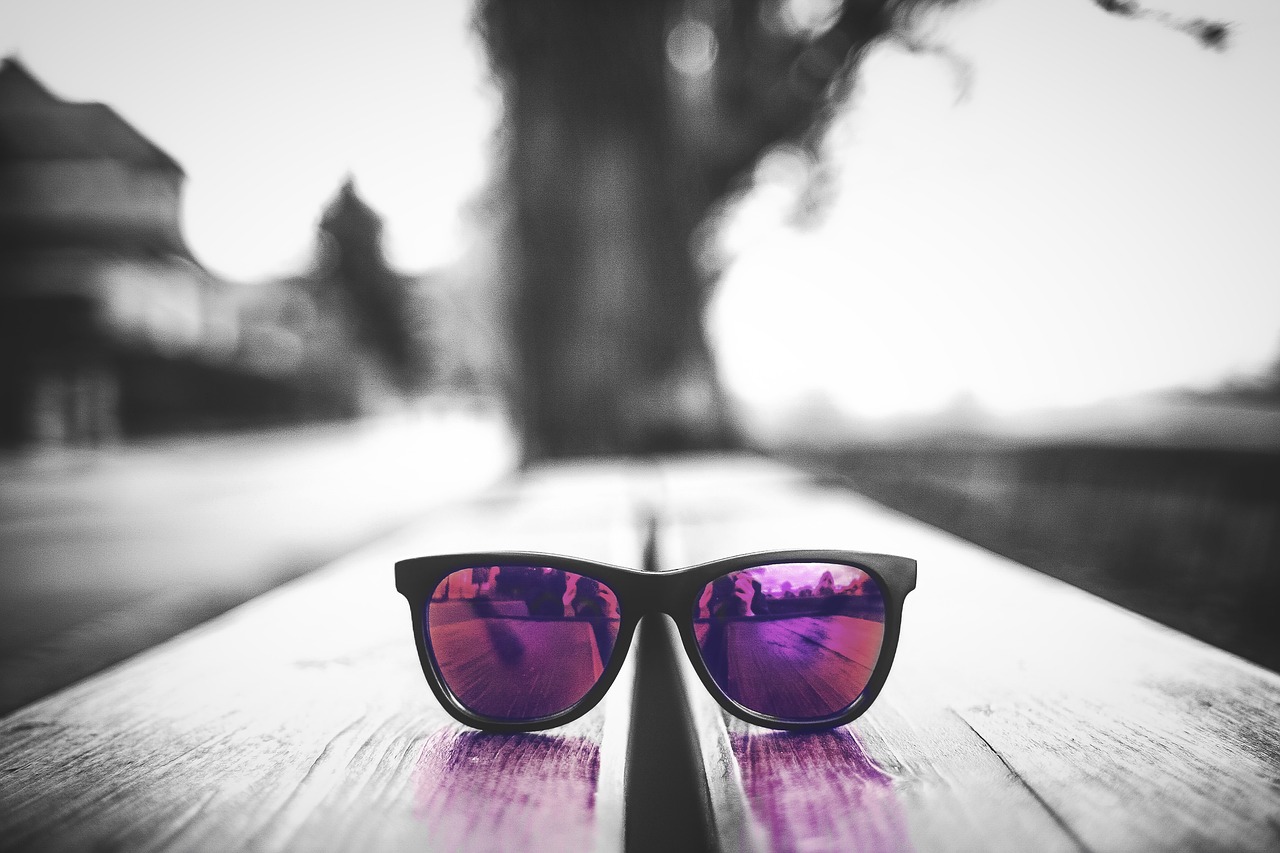
Warm vs. Cool Colors
When it comes to painting, understanding the distinction between warm and cool colors is crucial for artists aiming to evoke specific moods and emotions in their work. Warm colors, such as reds, oranges, and yellows, are often associated with feelings of energy, warmth, and excitement. Imagine the vibrant hues of a sunset or the fiery glow of a campfire; these colors can ignite passion and enthusiasm in the viewer. On the other hand, cool colors like blues, greens, and purples tend to convey a sense of calmness, serenity, and sometimes even sadness. Think of the tranquil blues of a serene lake or the soft greens of a lush forest; these shades can create a peaceful atmosphere that invites contemplation.
To illustrate the emotional impact of warm and cool colors, consider the following table that summarizes their effects:
| Color Type | Examples | Emotional Associations |
|---|---|---|
| Warm Colors | Red, Orange, Yellow | Energy, Excitement, Warmth |
| Cool Colors | Blue, Green, Purple | Calmness, Serenity, Sadness |
As you dive deeper into your artistic journey, experimenting with warm and cool colors can significantly enhance the emotional narrative of your paintings. For example, if you're aiming to depict a lively celebration, incorporating warm colors can bring that scene to life, making it feel vibrant and full of energy. Conversely, if your goal is to portray a quiet moment of reflection, cool colors can help set that tone, allowing viewers to connect with the emotion of the piece on a more profound level.
Moreover, the juxtaposition of warm and cool colors can create striking contrasts that draw the viewer’s eye. Think of a painting where a warm sun sets against a cool blue sky; the interplay of these colors not only enhances the visual appeal but also adds depth and dimension to the artwork. This contrast can serve as a powerful tool in your artistic arsenal, helping you to create focal points that guide the viewer's attention where you want it.
Ultimately, the choice between warm and cool colors is not merely about aesthetics; it's about storytelling. Each color carries its own language, and as an artist, you have the unique opportunity to use this language to communicate with your audience. So, next time you're at the canvas, ask yourself: What emotions do I want to evoke? How can I use warm and cool colors to tell my story?
- What are warm colors? Warm colors include reds, oranges, and yellows, which evoke feelings of warmth and energy.
- What are cool colors? Cool colors consist of blues, greens, and purples, typically associated with calmness and tranquility.
- How can I use warm and cool colors in my paintings? Experiment with both color types to create emotional depth and contrast in your artwork, guiding the viewer's experience.
- Can I mix warm and cool colors? Absolutely! Combining warm and cool colors can create dynamic contrasts and enhance the overall impact of your painting.
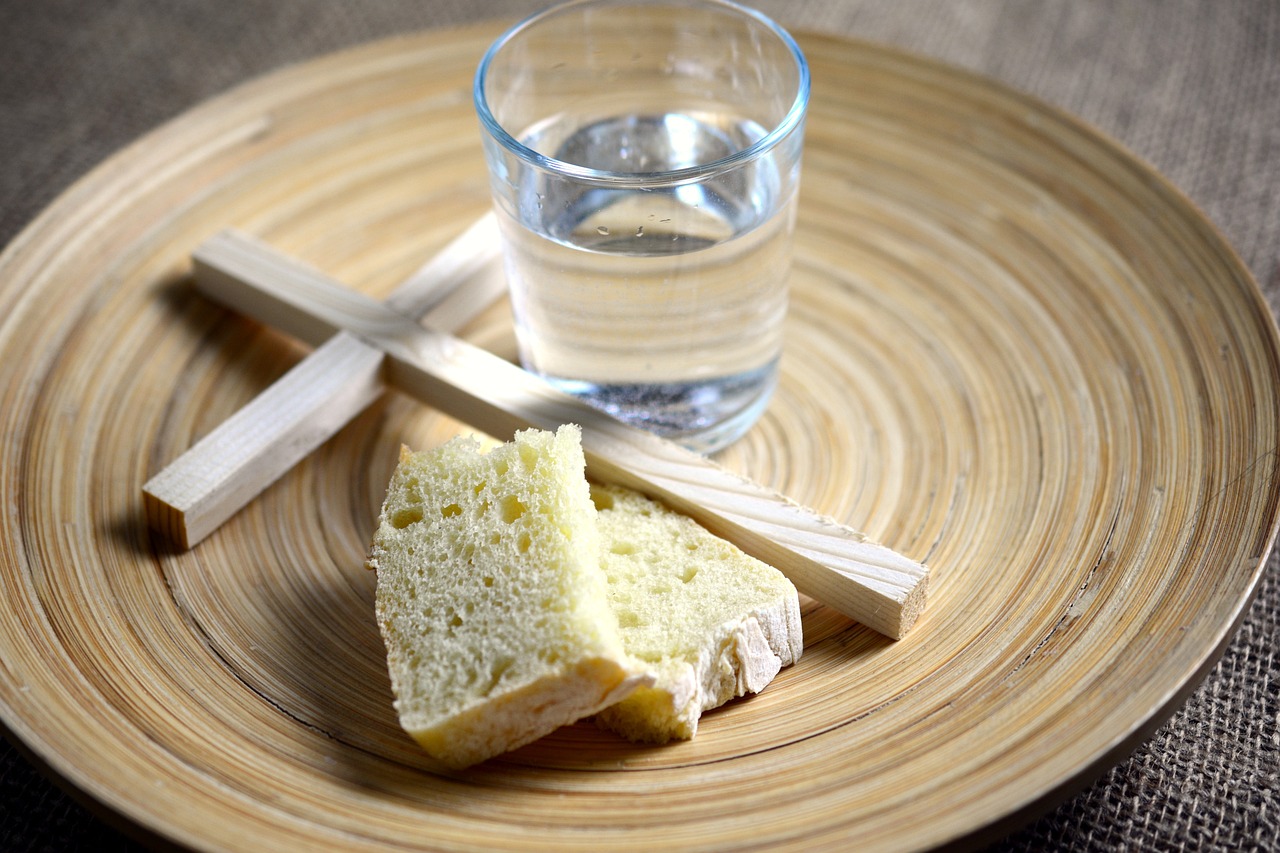
Color Symbolism Across Cultures
Colors are not just visual stimuli; they are deeply embedded in our cultures and histories, carrying meanings and emotions that can vary dramatically from one society to another. Understanding color symbolism across different cultures can significantly enhance your storytelling in art, allowing you to connect with viewers on a more profound level. For instance, while the color white often symbolizes purity and innocence in Western cultures, in many Eastern cultures, it is associated with mourning and death. This duality highlights the importance of context in your artistic choices.
In the realm of art, using colors that resonate with specific cultural meanings can create a powerful emotional response. For example, the color red can evoke feelings of passion and love in some cultures, while in others, it may represent danger or warning. Similarly, blue is often associated with tranquility and peace in many cultures, but in certain contexts, it can symbolize sadness or melancholy. By being aware of these associations, artists can make informed decisions that enhance their work's emotional depth.
To illustrate the diverse meanings of colors, consider the following table that summarizes how different cultures interpret key colors:
| Color | Western Symbolism | Eastern Symbolism | African Symbolism |
|---|---|---|---|
| Red | Love, Passion | Good Fortune, Happiness | Struggle, Sacrifice |
| Blue | Calm, Trust | Immortality, Protection | Healing, Spirituality |
| Green | Nature, Growth | New Beginnings, Fertility | Wealth, Prosperity |
| Yellow | Joy, Optimism | Impermanence, Sorrow | Warmth, Hospitality |
| Black | Elegance, Mystery | Death, Mourning | Power, Strength |
By incorporating these cultural insights into your artwork, you can create pieces that resonate more deeply with diverse audiences. Imagine painting a serene landscape using soft blues and greens to evoke tranquility, but if you know your audience is primarily from a culture that associates blue with sadness, you might reconsider your palette. This awareness not only enriches your artwork but also fosters a connection with your viewers, making your art more impactful.
Ultimately, the exploration of color symbolism across cultures is not just an academic exercise; it's a vital part of the artistic process. It allows you to communicate more effectively and to express ideas and emotions that transcend language and cultural barriers. As you continue to develop your artistic voice, remember that the colors you choose can tell a story of their own—one that resonates with the hearts and minds of those who encounter your work.
- What is color symbolism?
Color symbolism refers to the meanings and emotions associated with specific colors, which can vary across different cultures and contexts. - How can I use color symbolism in my artwork?
By researching the meanings of colors in various cultures, you can select palettes that resonate with your intended message or audience, enhancing the emotional impact of your art. - Are there universal meanings for colors?
While some colors have widely recognized meanings, many interpretations are influenced by cultural contexts, so it's essential to consider your audience.
Frequently Asked Questions
- What is color theory and why is it important for artists?
Color theory is the study of how colors interact and the effects they have on each other. It's crucial for artists because it helps them understand how to create harmony and contrast in their work. By mastering color theory, artists can enhance the emotional and visual impact of their paintings, making their art more compelling and engaging.
- What are primary, secondary, and tertiary colors?
Primary colors are the foundation of color theory and include red, blue, and yellow. Secondary colors are created by mixing two primary colors, resulting in green, orange, and purple. Tertiary colors are made by mixing a primary color with a secondary color, leading to hues like red-orange or blue-green. Understanding these color categories is essential for creating a balanced palette in your artwork.
- How can I use complementary colors in my paintings?
Complementary colors are located opposite each other on the color wheel, such as blue and orange or red and green. Using these colors together can create striking contrast and vibrancy in your artwork. To effectively incorporate complementary colors, try using one as the dominant hue while employing the other to highlight focal points and add depth.
- What are analogous colors and how do they affect a painting?
Analogous colors are those that sit next to each other on the color wheel, such as blue, blue-green, and green. These colors create a sense of harmony and cohesion in a painting, making them ideal for serene and unified compositions. When using analogous colors, consider varying their shades and tints to add interest while maintaining a harmonious feel.
- How do warm and cool colors influence the mood of a painting?
Warm colors like reds, oranges, and yellows typically evoke feelings of energy, warmth, and excitement, while cool colors such as blues, greens, and purples tend to create a calm and tranquil atmosphere. By strategically using warm and cool colors, artists can effectively convey specific moods and emotions, enhancing the overall impact of their artwork.
- What is color symbolism, and how can it enhance my art?
Color symbolism refers to the meanings and associations that different colors hold across various cultures. For instance, red may symbolize passion or danger, while blue often represents tranquility. By understanding these associations, artists can infuse their work with deeper narratives and connect more profoundly with their audience, making their art more relatable and impactful.



















